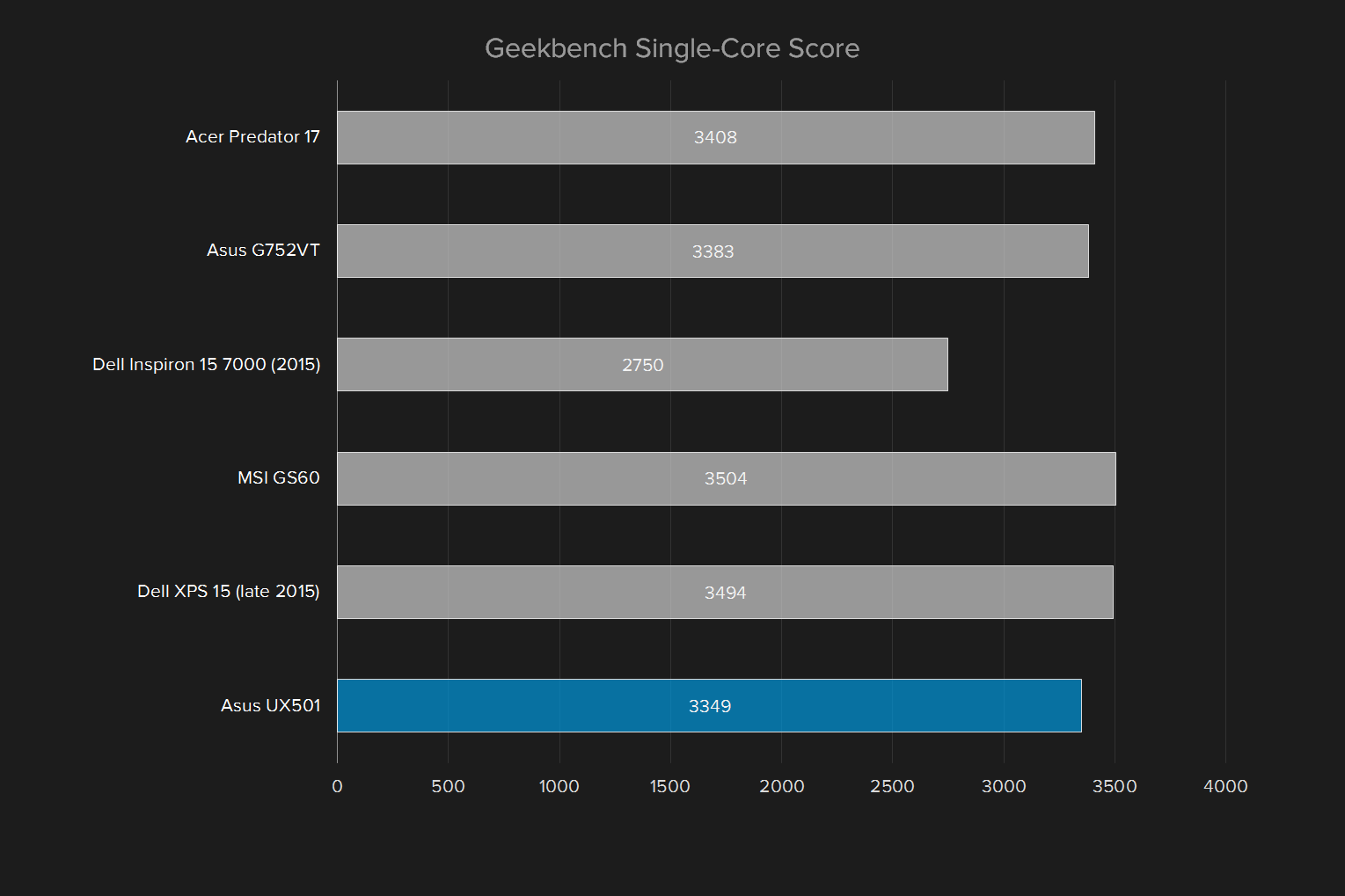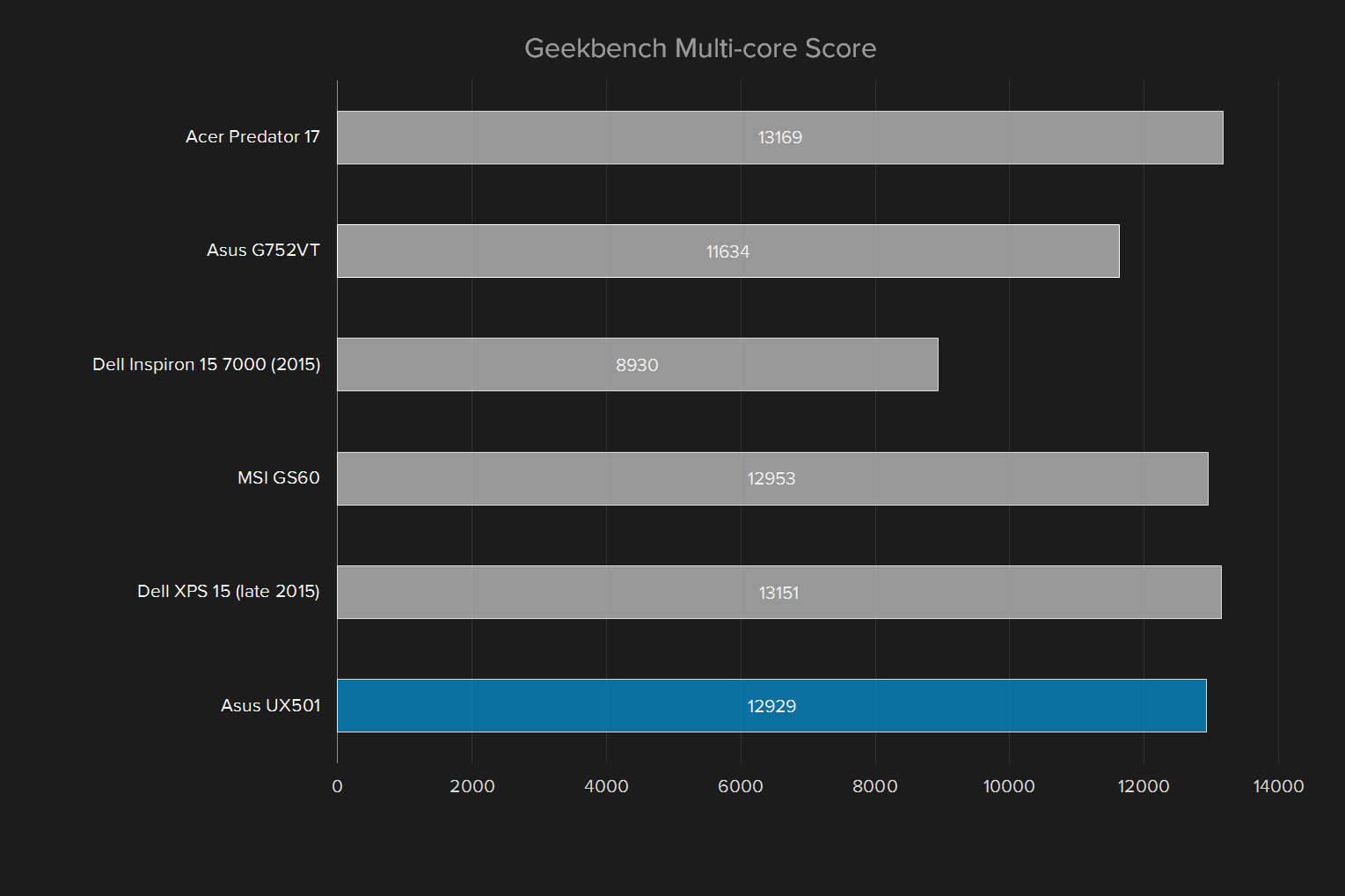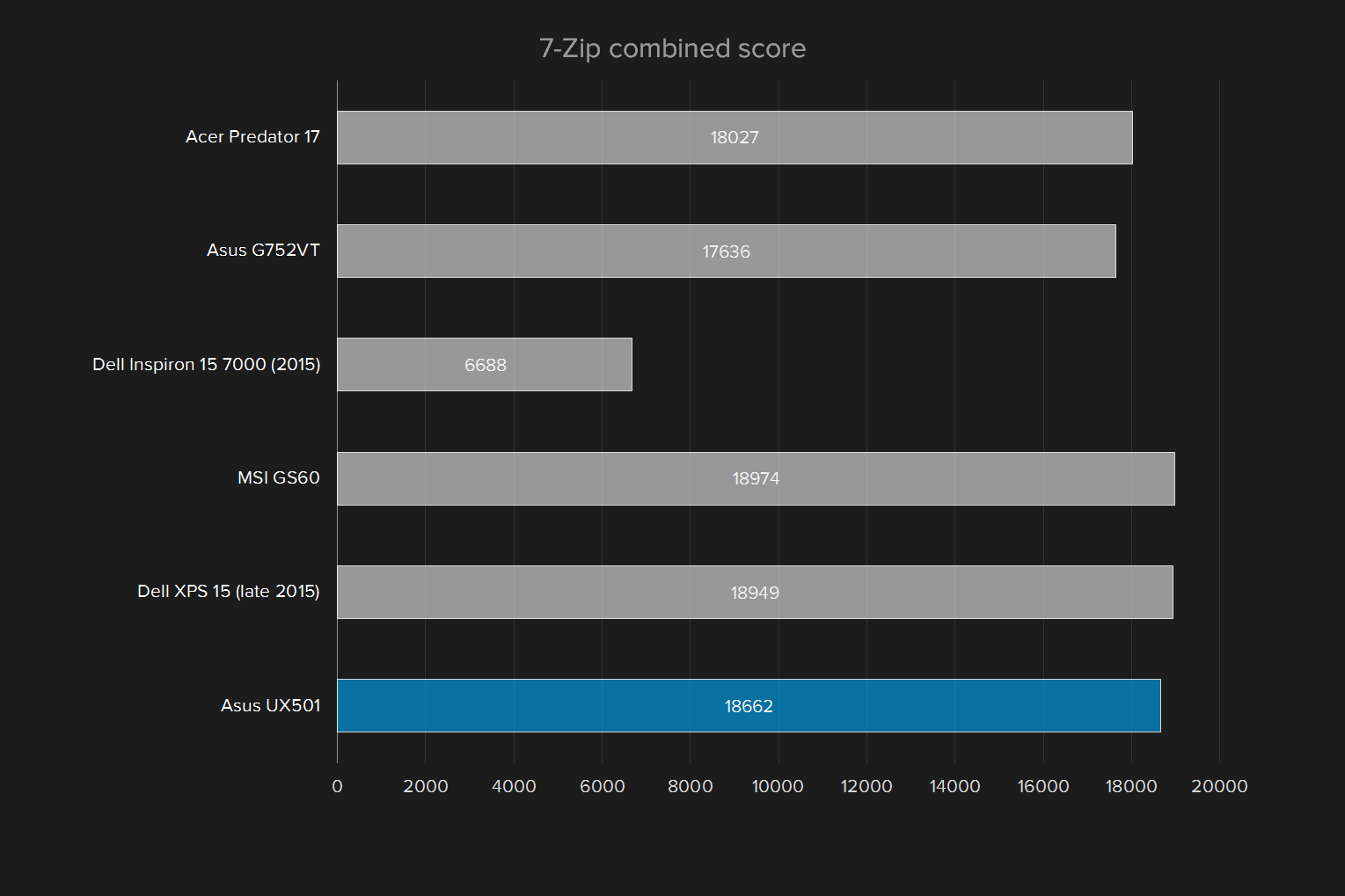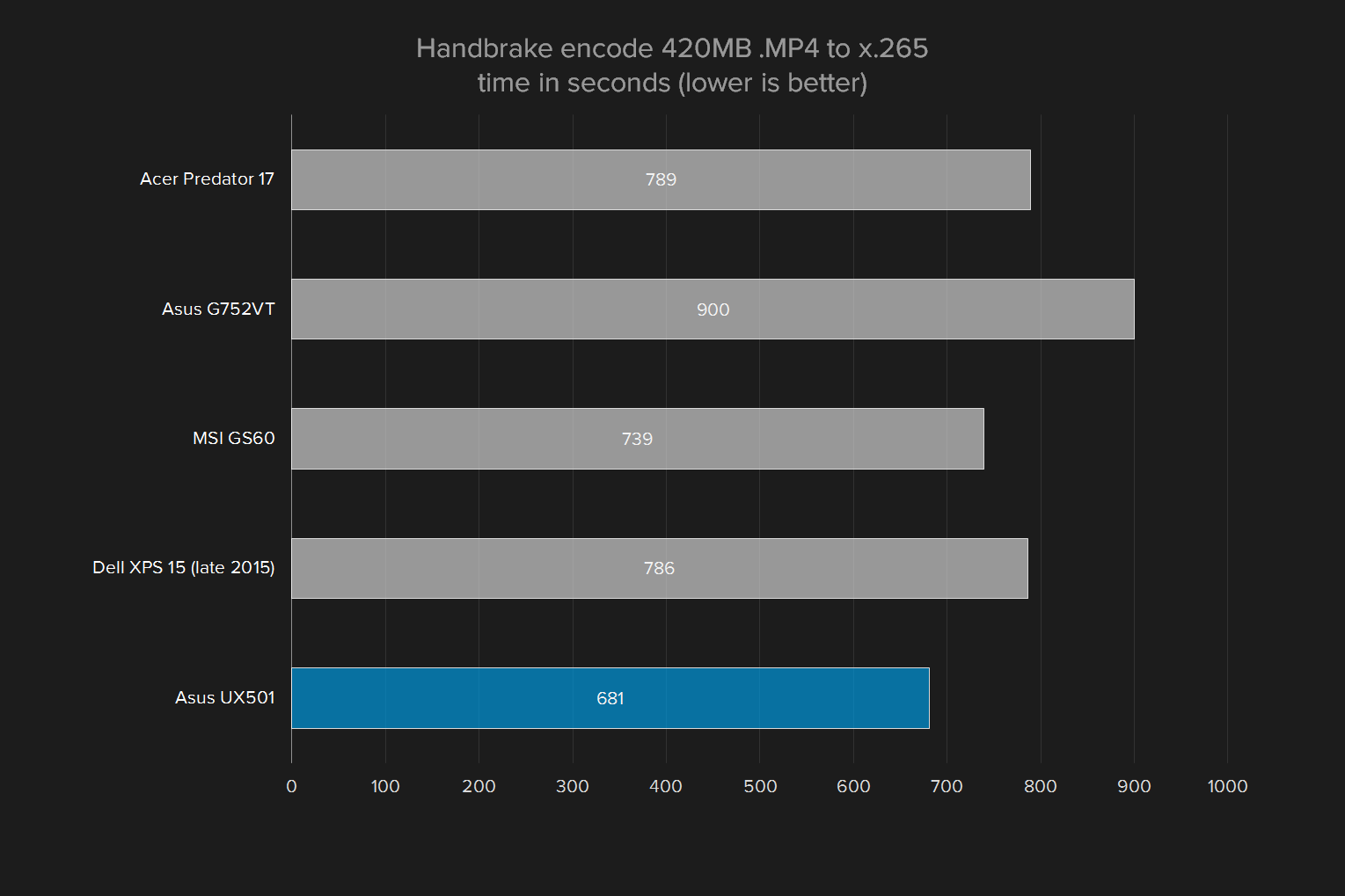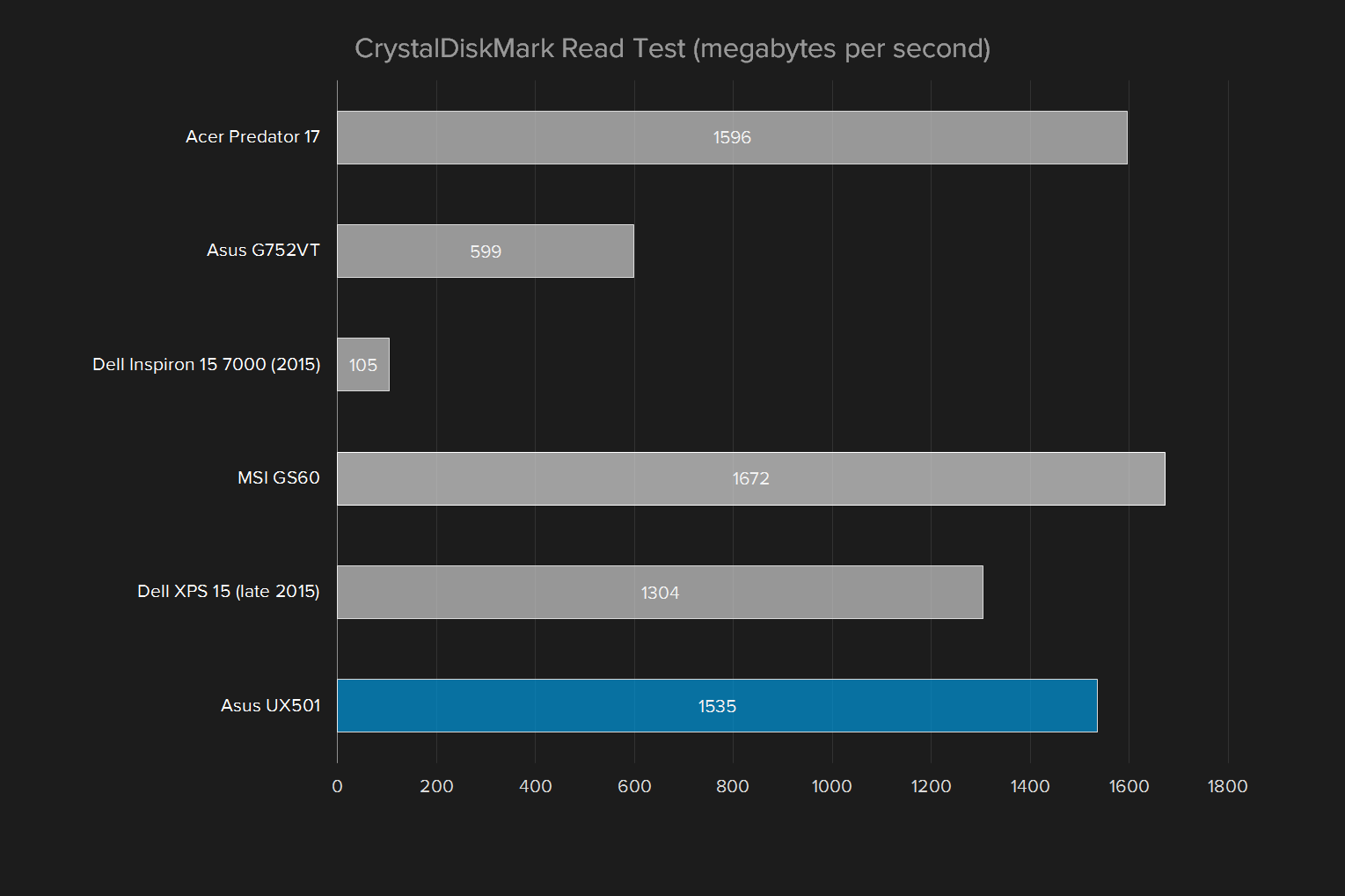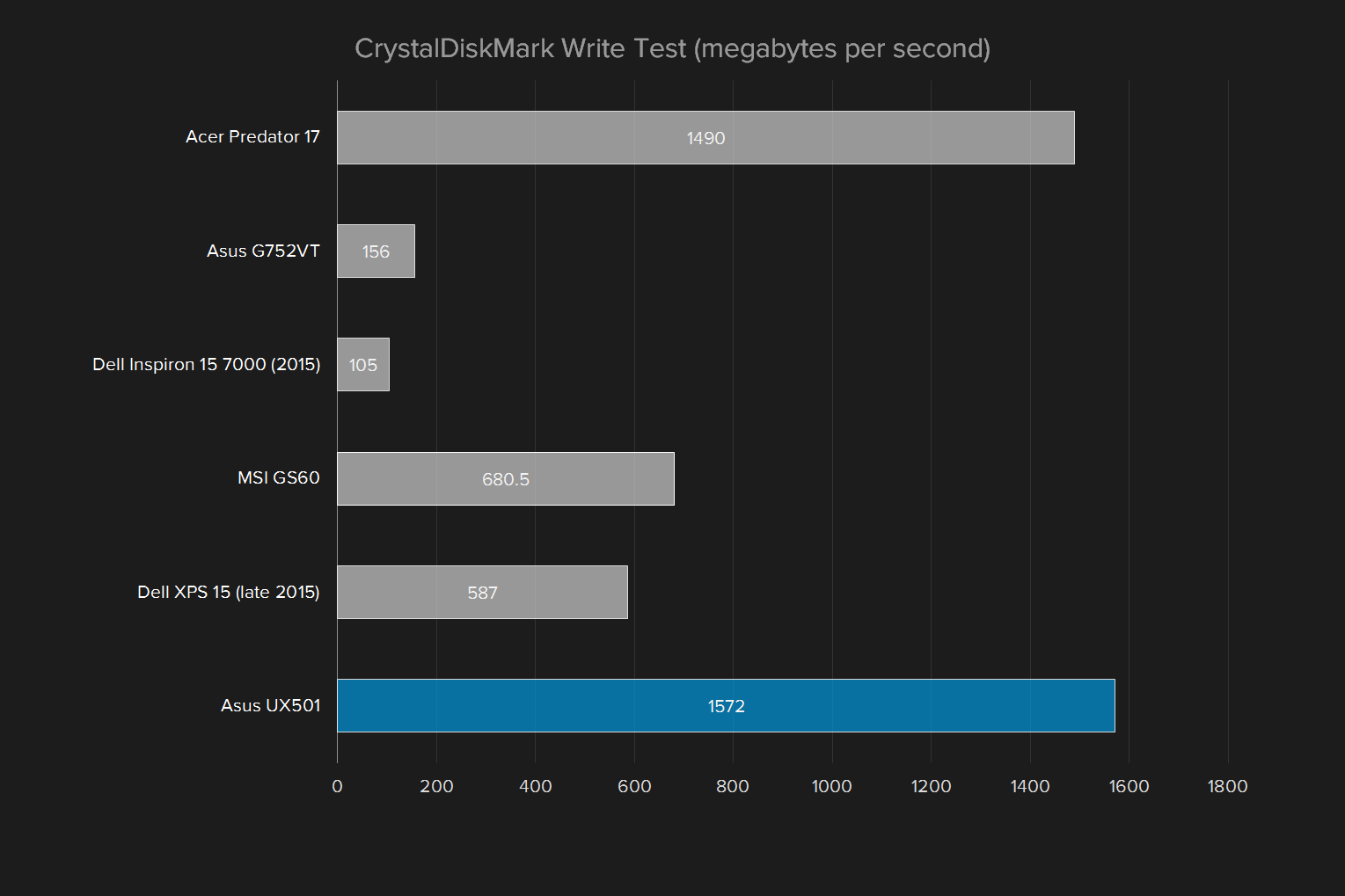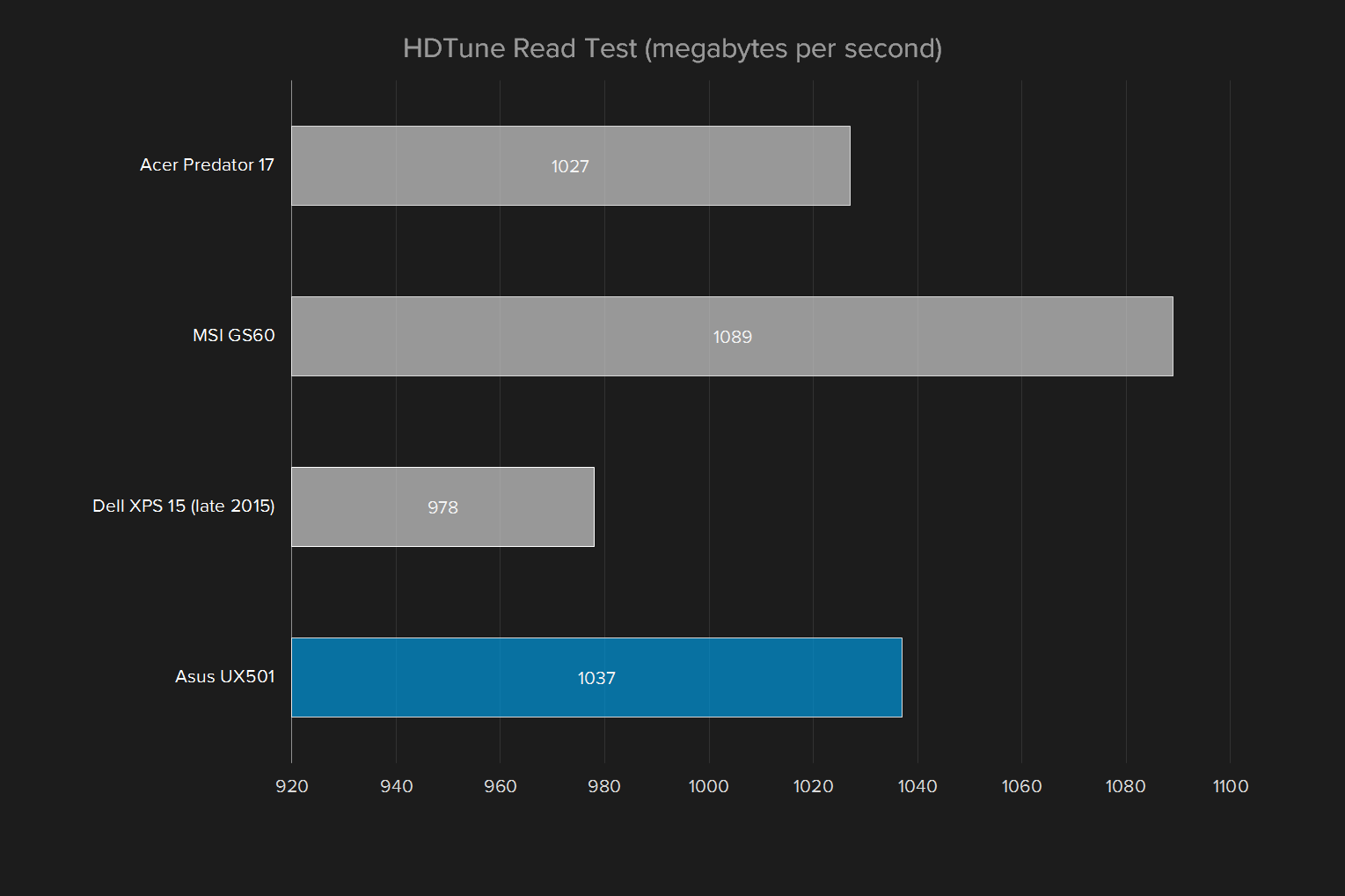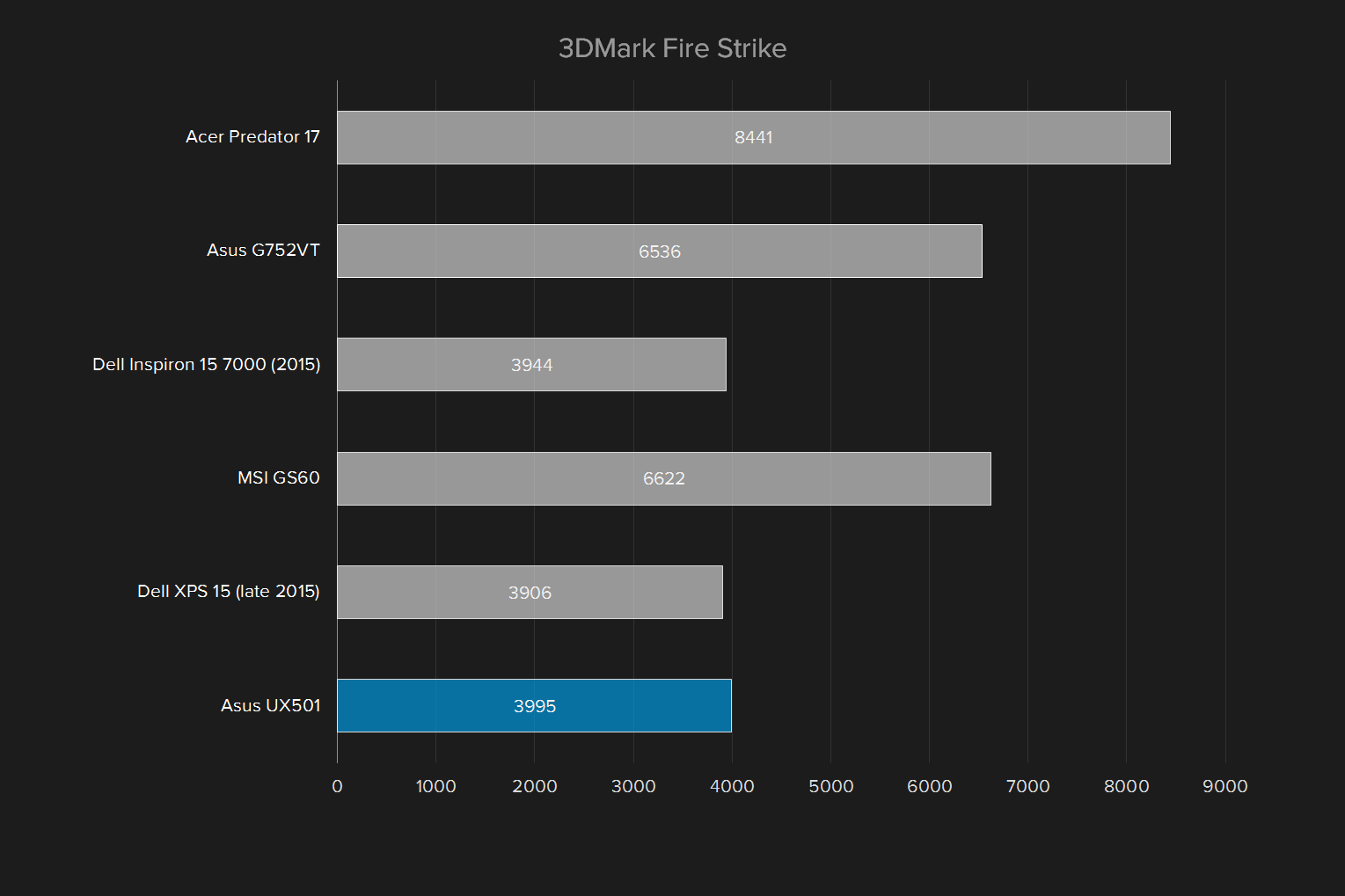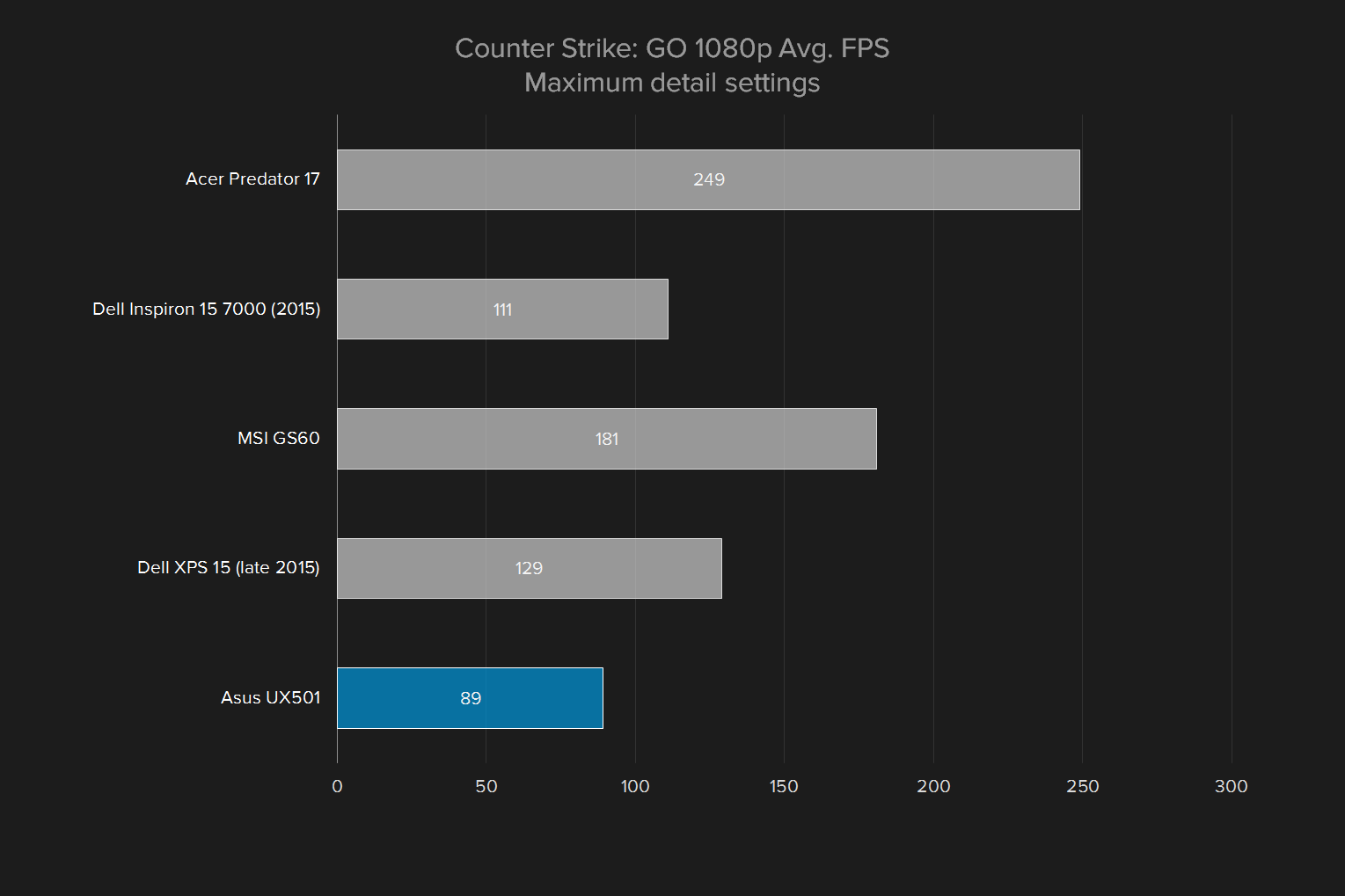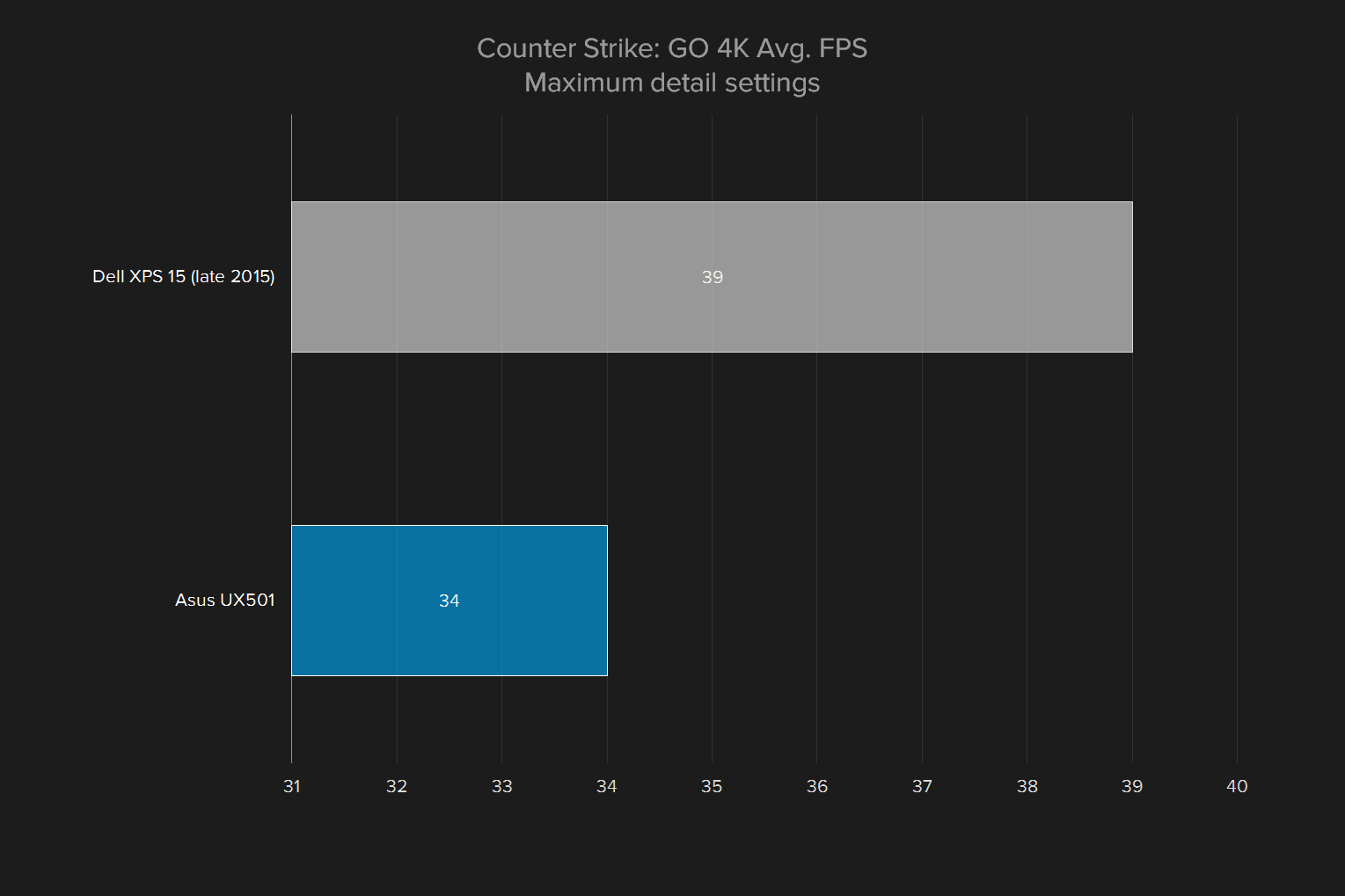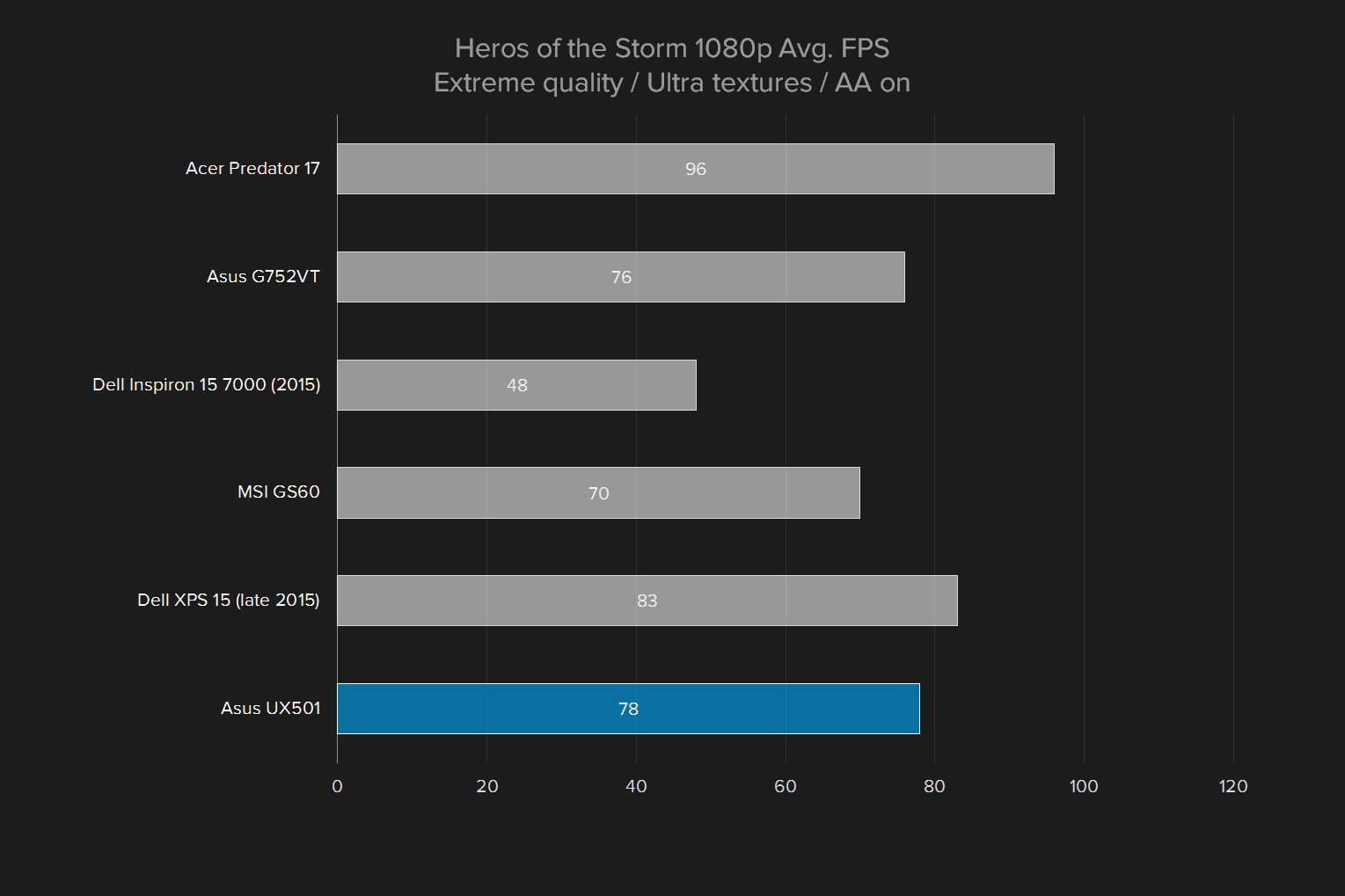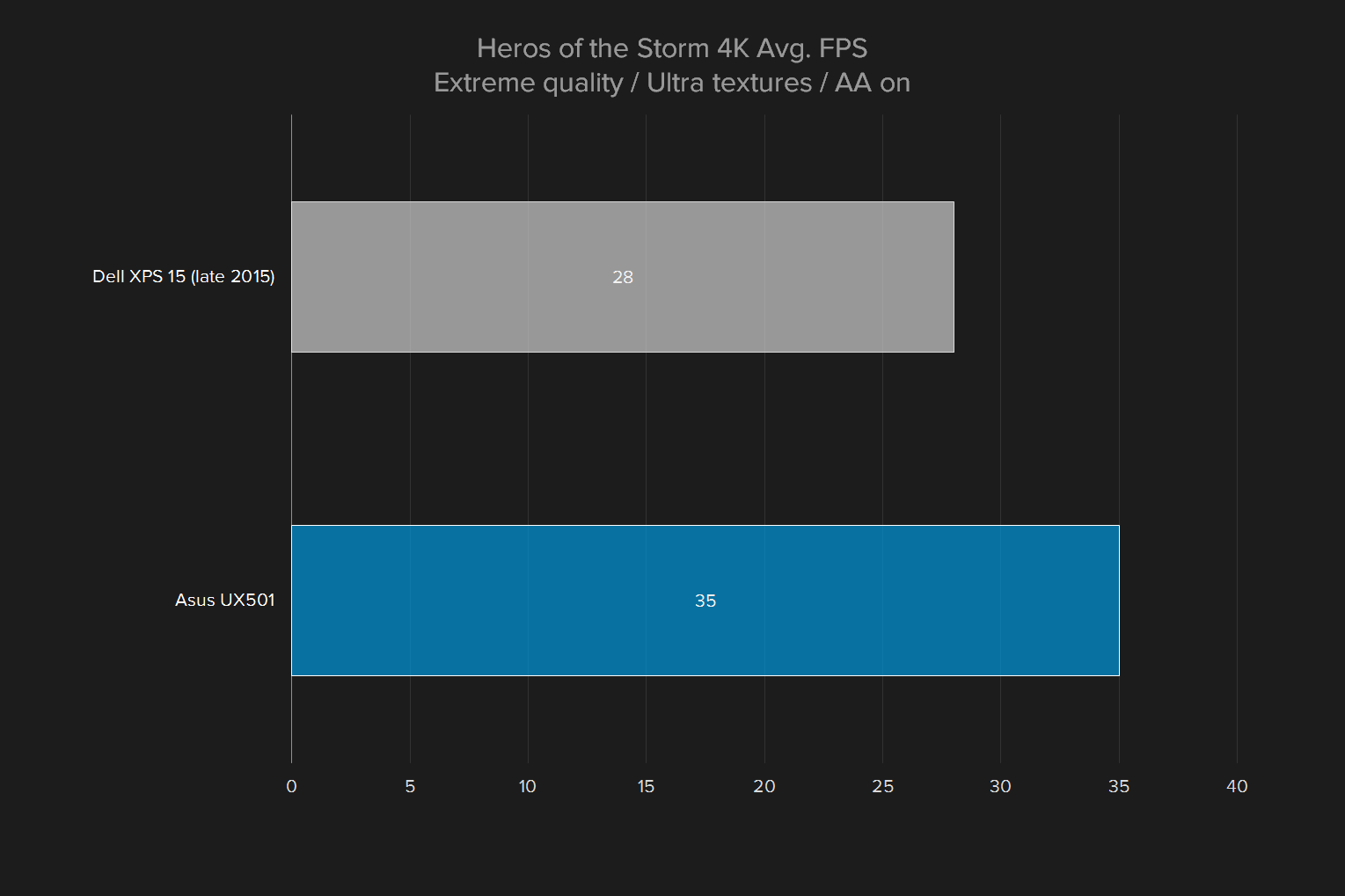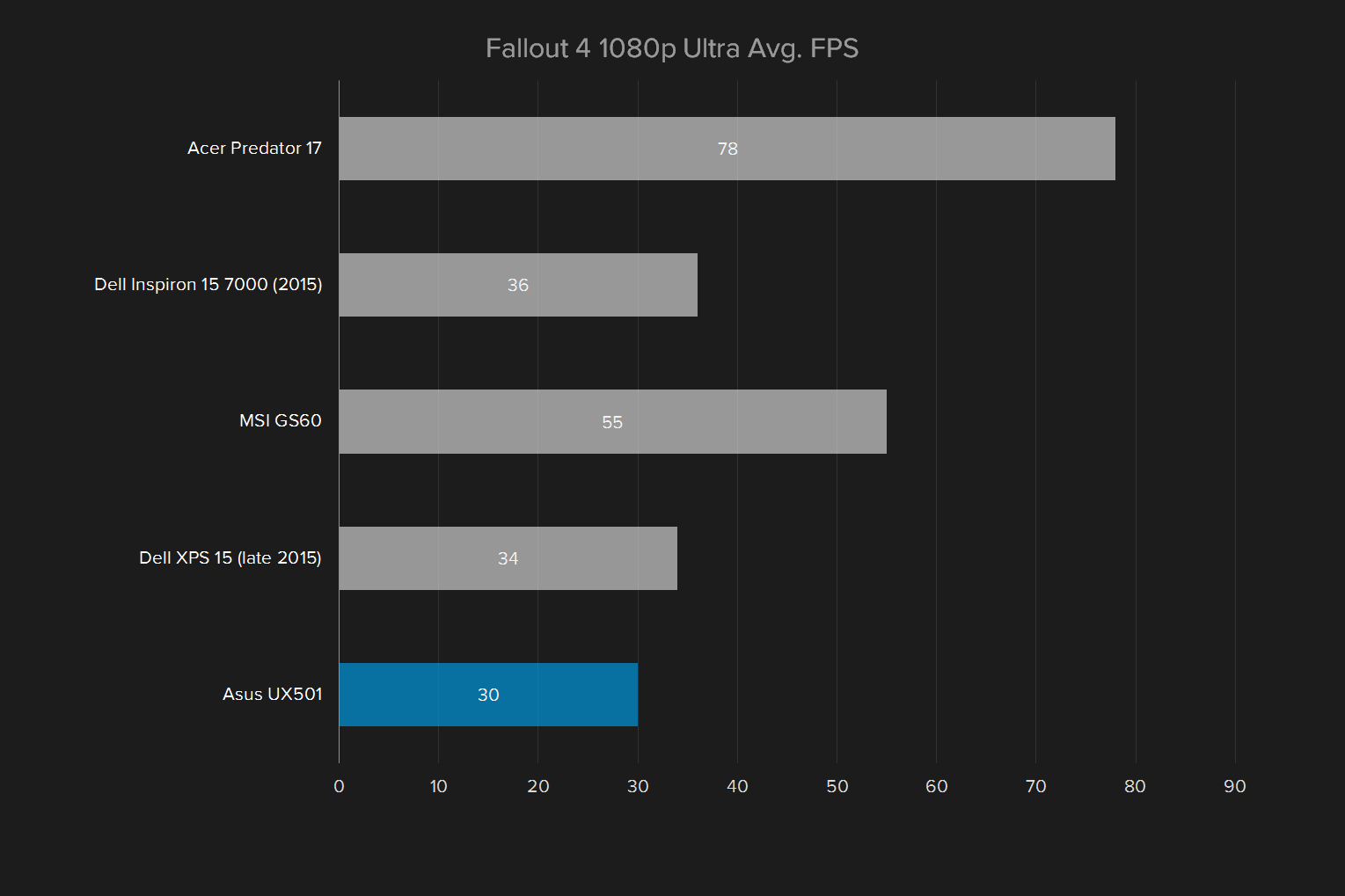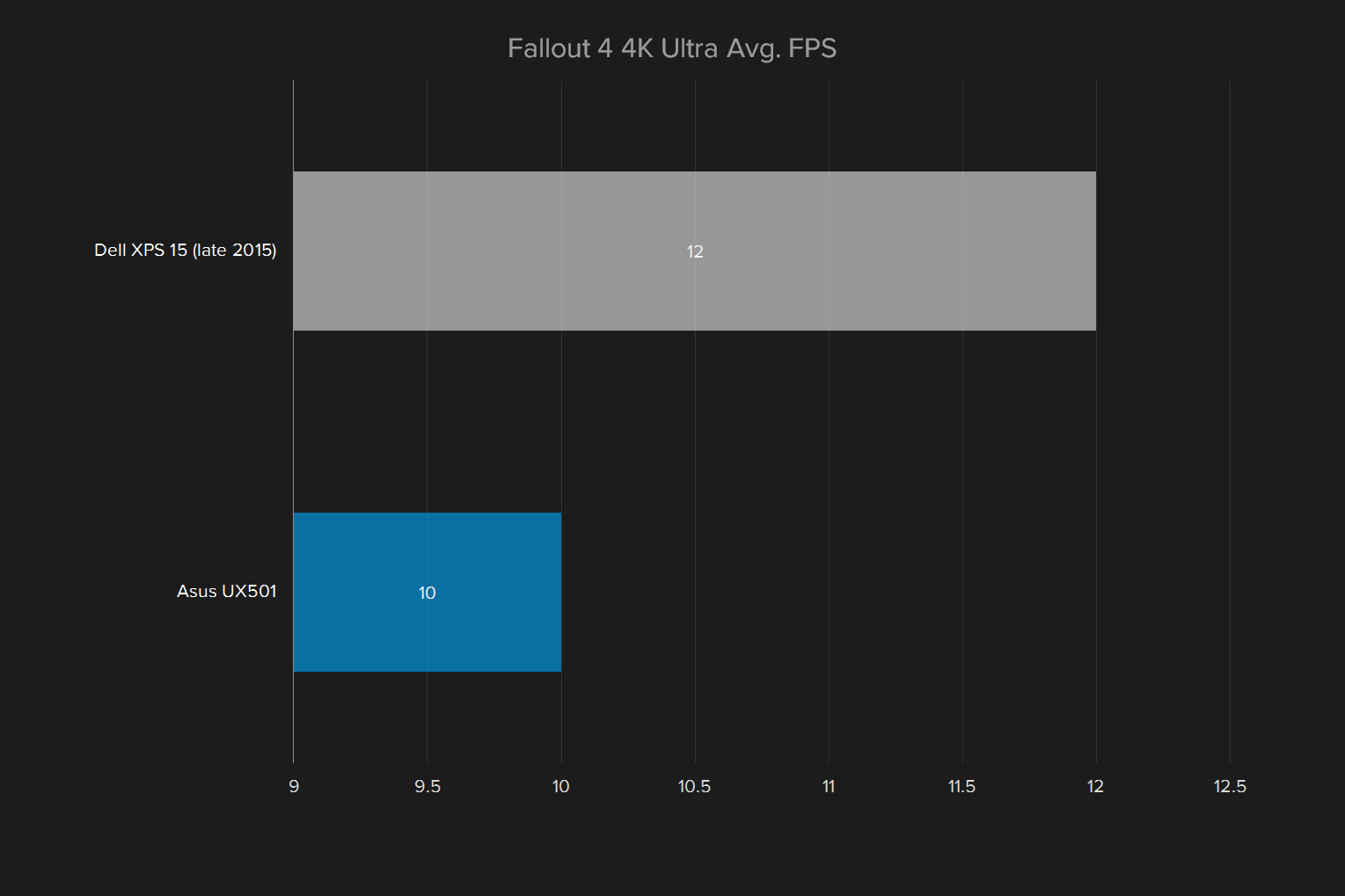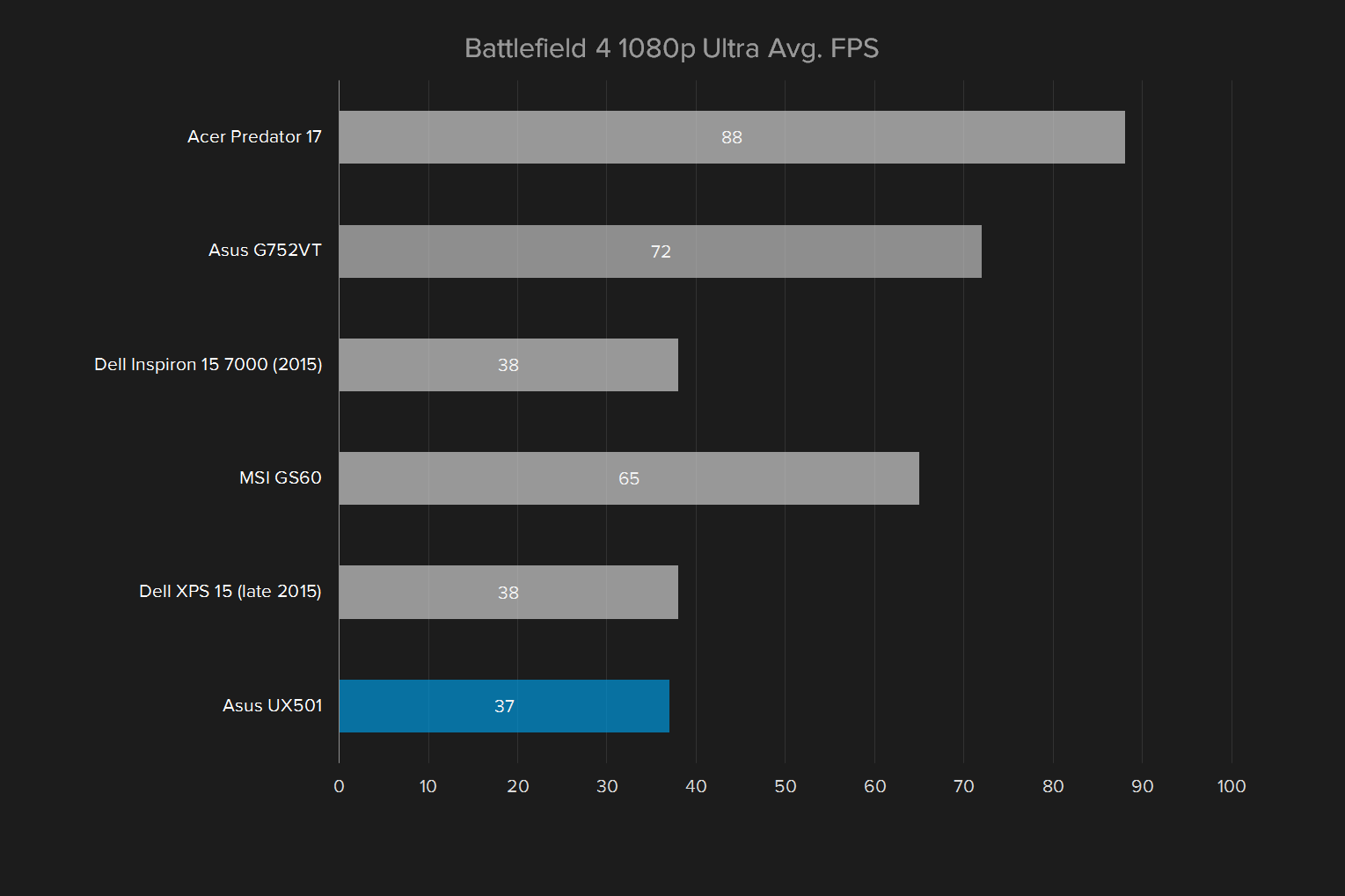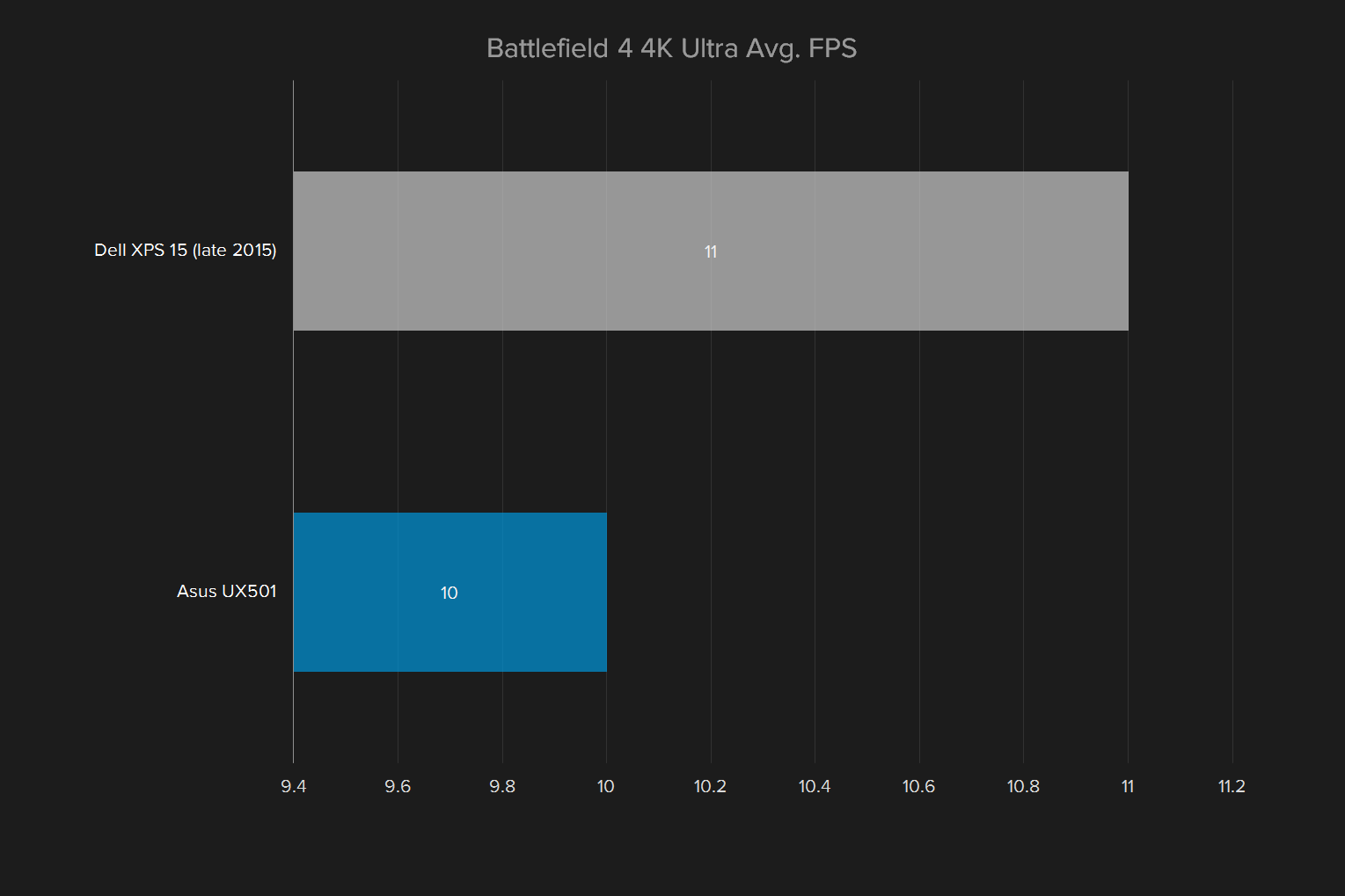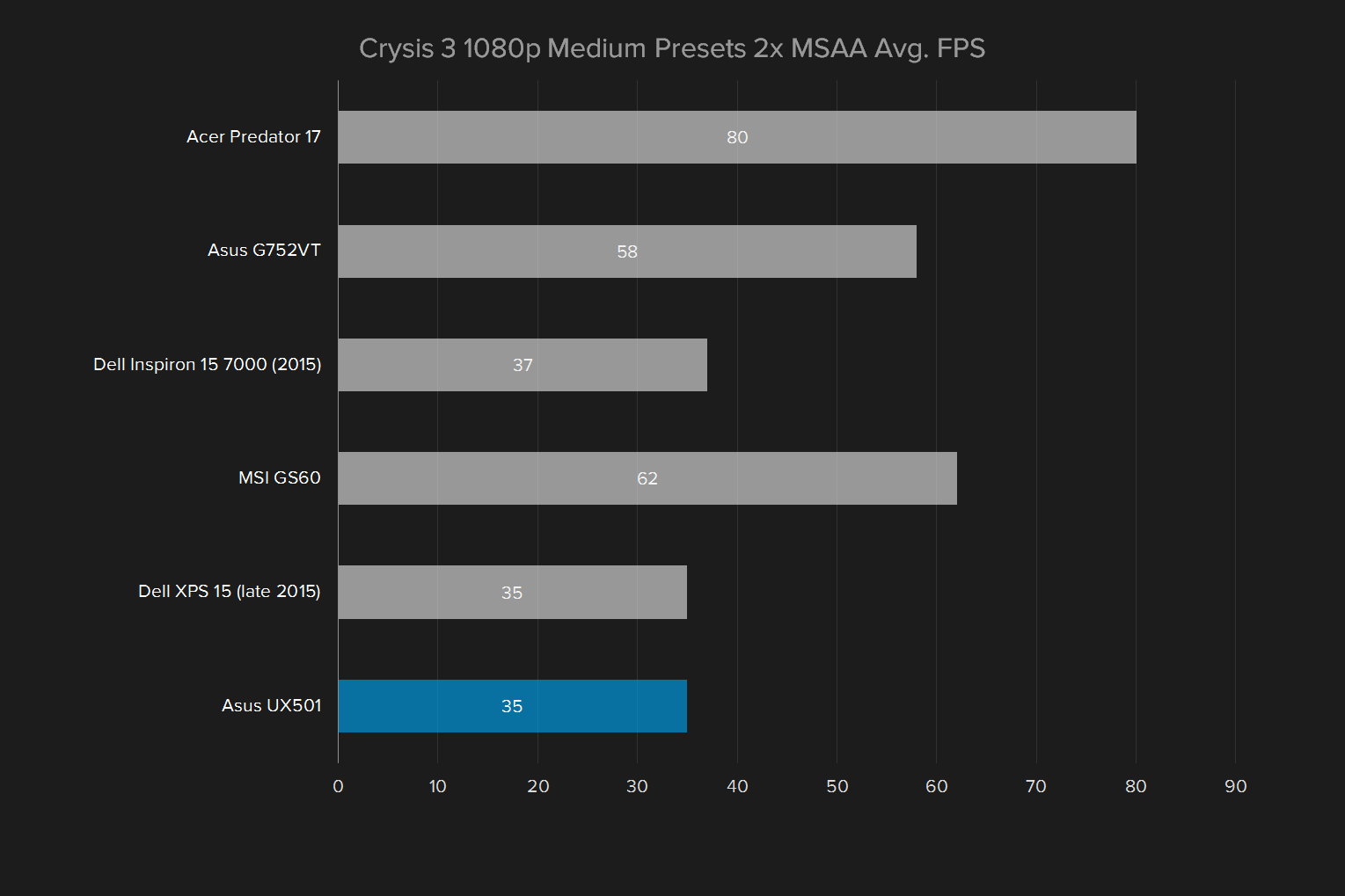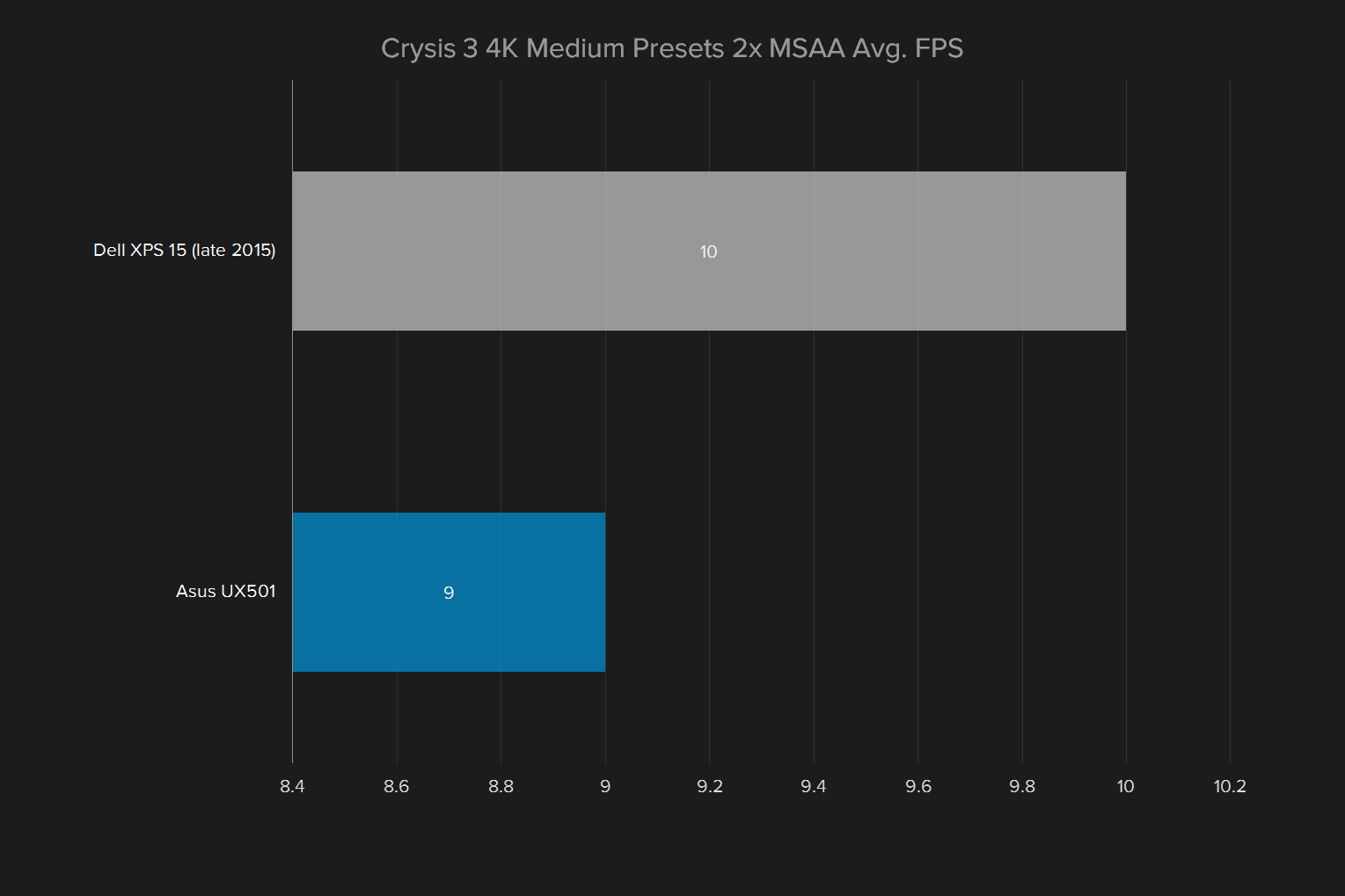“Crushing performance at a fair price comes with a few catches in Asus' UX501.”
- Quick quad-core processor
- GTX 960M makes gaming possible
- Strong battery life
- Runs quiet and cool
- Lackluster design
- A bit heavy and thick
- Mirror-like display coating
Asus’ Zenbook line has always been the tip of the spear in PC design. Its blend of elegance, portability, and affordability is hard to match. That was true when the first Zenbook appeared five years ago, and it’s true today, with the Zenbook UX305CA.
But the line isn’t just comprised of super-slim ultrabooks. It has long offered larger, 15-inch systems – but they haven’t reviewed as well, and while we can’t say for certain how well they’ve sold, they’re certainly less common in the circles we visit. A 13-inch Zenbook is a common site at tech conventions, but the larger models? Not so much.
That doesn’t mean Asus’ has given up. In fact, its line-up of large Zenbooks is as strong as ever. 2015 saw the debut of the Zenbook NX500, the first laptop ever with a Quantum Dot display. And now we’ve had hands on the UX501, a more affordable, yet still luxurious, desktop replacement.
The system’s spec sheet is impressive. It has a Core i7-6700HQ processor, 16GB of memory, an Nvidia GeForce GTX 960M graphics card with 2GB of GDDR5 memory, a 512GB solid state drive, and a
You might think that sounds too good to be true, and we don’t blame you. So, is this Zenbook a maximum performance laptop with a minimal price tag? Or is there a catch?
Design
While the UX501 is much less expensive than the older NX500, it uses the same silver metal chassis. That’s a disappointment. Though it feels solid, this Zenbook lacks the cohesive design of Apple’s MacBook Pro, and can’t compare to the combination of metallic and soft-touch materials used by Dell’s XPS 15. It’s like a Toyota Camry with every option checked. Luxurious – but also generic.
- 3. Asus Zenbook Pro UX501
It’s not the lightest system, weighing in at five pounds. That’s a half-pound more than the MacBook Pro 15 and up to a pound more than the Dell XPS 15. And at eight-tenths of an inch thick, it’s not slimmest around. This is not to say the UX501 feels particularly heavy for its size, because it’s not. But it’s also far from the most portable 15-incher around.
The laptop’s flanks offer a decent selection of ports. USB is present in force, with three USB 3 ports and one USB Type-C /
Inputs
We didn’t like the NX500’s keyboard, and unfortunately it makes a return in the UX501.
The key caps are silver, the same color as the background material, and this lack of contrast makes for a less interesting look. Asus’ could also stand to change the contouring of keys. They’re flat, and rounded at the edges – just like with the company’s more affordable notebooks. Nothing about the keyboard screams luxury.
That carries over to its feel. Tapping a key reveals reasonable travel, but the bottoming action is vague. There’s also a ton of space between each key – too much, I’d argue, which means the key caps are slightly smaller than they need to be. And Asus’ made the decision to cram a numpad into the device. We know that will please frequent Excel users, but it means a reduction in overall key size, and forces the keyboard off center with the touchpad and display.
Keyboard backlighting is standard and offers three levels of brightness. Light leak is well tamed, and available brightness options are varied enough to provide a good fit for most conditions. Keys do not look evenly lit, however, and that detracts from the laptop’s premium look.
Asus’ has phoned in the touchpad. It comes nowhere near using all the available space surrounding it. While responsive, it doesn’t feel smoother or quicker than any other laptop, including many that cost hundreds less. We also had an occasional problem with mis-clicks due to the touchpad registering an errant palm. This can be problem because of the keyboard’s offset position, which places the meat of the user’s right hand directly on top of the touchpad’s surface.
Display
Our review unit arrived with a
Yet the UX501’s technical excel is once again undermined by an annoying problem. Glare. This display is easily one of the most reflectively currently sold. Any source of light, no matter how minute, is sharply mirrored by the panel. That might be helpful if you need to check your hair, but it’s terrible if you need to check emails next to a window.
The problem is made worse by a noticeable gap between the actual display panel and the glass protecting it. A dark gap is actually visible along the borders of the panel when viewed from an angle, and the distance is obvious when the touchscreen is used.
Strangely, the display didn’t do well in our contrast test despite its gloss coat, producing a maximum contrast of only 400:1. That’s not abysmal, but it’s lower than most 15-inchers we’ve recently tested. The Dell XPS 15, for example, produced a ratio of 640:1. The Zenbook’s gamma tested poorly, too, with a curve of 2.4. That reading means images appear a bit darker on the UX501 than on systems that achieve an ideal reading of 2.2.
The mirror-like display is helpful if you need to check your hair.
Color accuracy testing reported an average error of 2.51 (lower is better). That is not a bad result, but it’s higher than some recently tested competitors. The Dell XPS 15 hit an incredible score of .51, and the Acer Aspire V15 Nitro Black Edition achieved .83. Those numbers indicate image quality that’s extraordinarily close to reality. Watching high-quality
Our criticism sounds harsh, but the display is far from hopeless. Viewed alone, in a dark room, the UX501’s display is not bad. It is reasonably accurate, extremely bright, and wonderfully sharp. In fact, it’s better than 99 percent of all laptop displays we’ve ever used. But luxury-level
CPU Performance
Asus has stacked the performance deck in its favor. The UX501 we reviewed came with a Core i7-6700HQ and 16GB of
While the the Zenbook’s scores don’t decimate the competition, they are solidly mid-range. That’s good, because the UX501 is one of the least expensive systems in the graphs above. Dell’s XPS 15, the most direct competitor, was shipped to us with an as-tested price of $2,100.
Hard drive performance
The 512GB solid state drive in the Zenbook is Samsung’s 950 Pro, known to be one of the quickest available. It proved its worth once again, delivering incredible read and write speeds that stomp most competitors.
What’s exceptional about the Samsung 950 Pro is how it manages to sustain extremely high speeds in both read and write scenarios. As you can see, a lot of drives are very fast when reading data, but don’t measure up when writing. Overall, the Asus UX501 slightly beats the Acer Predator 17 to set a new record for SSD performance in a laptop.
Game Performance
There’s nothing about the Asus UX501 that’s screams gaming, but it does come with a GTX 960M, a GPU that many consider the bare minimum for any laptop that aspires to handle modern titles. Does it make this laptop a stealth gaming rig? Well – that depends on what you play.
We’ve tested the GTX 960M in a few
All that’s at 1080p, mind you, and not the display’s native
These numbers are reasonable, but not exceptional. They’re on par with the XPS 15, which is more expensive, but also the Dell Inspiron 15 7000, which is several hundred dollars less. Acer’s Aspire V15 Nitro is also a great budget gaming alternative, as it serves up a Core i7-6700HQ and GTX 960M for as little as $950.
Portability
As mentioned, the Asus UX501 is not the lightest or thinnest 15-inch laptop around, losing in that area to the Dell XPS 15 and MacBook Pro 15 by about a half-pound and two tenths of an inch. The laptop is not extraordinarily hard to toss in a bag, but it’s certainly too large to handle if you fly economy, and its heft can become tiring after a day of hauling it around.
However, Asus’ has crammed a secret into the laptop – a 96 watt-hour battery. That’s a lot of juice, and it carried the laptop to six hours and 25 minutes of endurance in our web browsing macro, which refreshes through a set of websites every 40 seconds. The Asus also lasted six hours and 43 minutes in the Peacekeeper web browsing benchmark.
- 1. Asus Zenbook Pro UX501
That beats the Dell XPS 15, which lasted only four hours and 21 minutes in Peacekeeper. We’ve not tested the most recent Apple MacBook Pro 15’s battery life, but given its similar battery size (99.5 watt-hours), and lower display resolution, we anticipate the Apple system would last a bit longer. The UX501 also beats the Asus ROG G752VT, the Acer Aspire V15 Nitro, and the Dell Inspiron 15 7000, all of which achieved four or five hours of endurance in our tests.
Cooling
While powerful, the UX501’s cooling system has no trouble keeping the internals cool. At idle, we recorded a maximum external temperature of 83.8 degrees Fahrenheit – about ten degrees above room temperature. Full load pumped the reading up to 105.6 degrees, which is a bit warm, but cooler than the Dell XPS 15, Dell Inspiron 15 7000, Acer Aspire V15 Nitro Black Edition, and other recently tested 15-inch
Asus’ has crammed a secret into the laptop – a 96 watt-hour battery.
The system fans aren’t loud, either. They’re nearly silent at idle and at load only rose to 44.5 decibels. That volume is noticeable, but again quieter than recently tested competitors. Only the most sensitive users will find the noise distracting.
Warranty
Asus’ ships the UX501 with a one-year warranty, which is standard in the industry. Acer’s Predator 17
Conclusion
There’s a lot to like about the Asus Zenbook UX501VW-DS71T. The laptop is a real bruiser, meeting the competition toe-to-toe and coming out the winner as often as not, despite a price tag that’s hundreds less than similar competitors from Apple and Dell. We don’t normally expect a $1,500 laptop to deliver performance at the head of its class. Better still, the UX501’s crushing performance is backed up by impressive endurance. This laptop can wrestle with demanding applications for as long as any 15-inch laptop available.
Yet excellent performance doesn’t mean using this Asus is a moment of zen. The
If you need a fast laptop, and you plan to use it mostly in a room with controlled lighting, the UX501 makes a lot of sense. We know many buyers eyeing a 15-inch laptop rarely use it outside their home. But the display makes this Asus a tough sell for those who travel – even if the local Starbucks is the furthest you journey.






